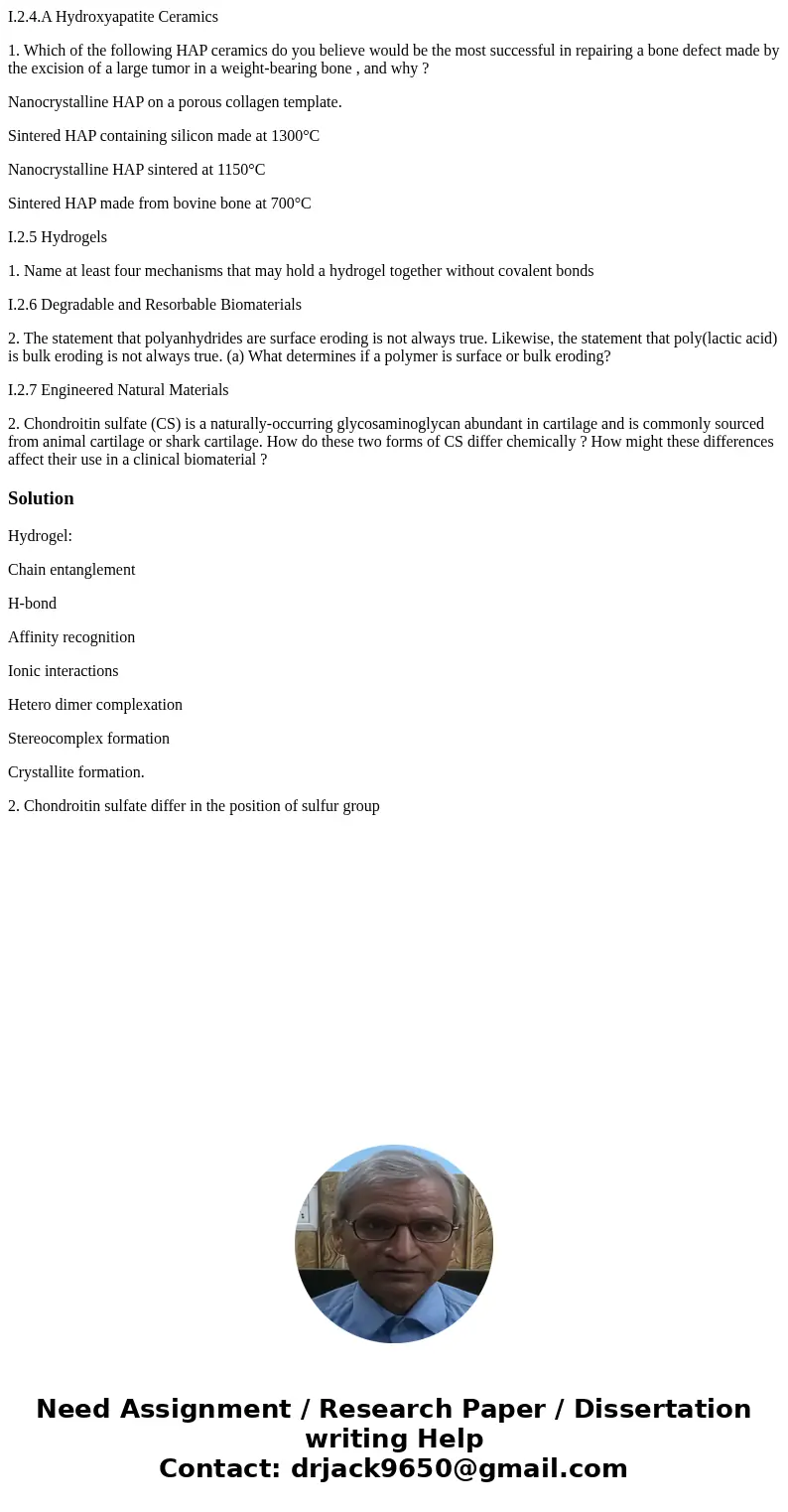I24A Hydroxyapatite Ceramics 1 Which of the following HAP ce
I.2.4.A Hydroxyapatite Ceramics
1. Which of the following HAP ceramics do you believe would be the most successful in repairing a bone defect made by the excision of a large tumor in a weight-bearing bone , and why ?
Nanocrystalline HAP on a porous collagen template.
Sintered HAP containing silicon made at 1300°C
Nanocrystalline HAP sintered at 1150°C
Sintered HAP made from bovine bone at 700°C
I.2.5 Hydrogels
1. Name at least four mechanisms that may hold a hydrogel together without covalent bonds
I.2.6 Degradable and Resorbable Biomaterials
2. The statement that polyanhydrides are surface eroding is not always true. Likewise, the statement that poly(lactic acid) is bulk eroding is not always true. (a) What determines if a polymer is surface or bulk eroding?
I.2.7 Engineered Natural Materials
2. Chondroitin sulfate (CS) is a naturally-occurring glycosaminoglycan abundant in cartilage and is commonly sourced from animal cartilage or shark cartilage. How do these two forms of CS differ chemically ? How might these differences affect their use in a clinical biomaterial ?
Solution
Hydrogel:
Chain entanglement
H-bond
Affinity recognition
Ionic interactions
Hetero dimer complexation
Stereocomplex formation
Crystallite formation.
2. Chondroitin sulfate differ in the position of sulfur group

 Homework Sourse
Homework Sourse